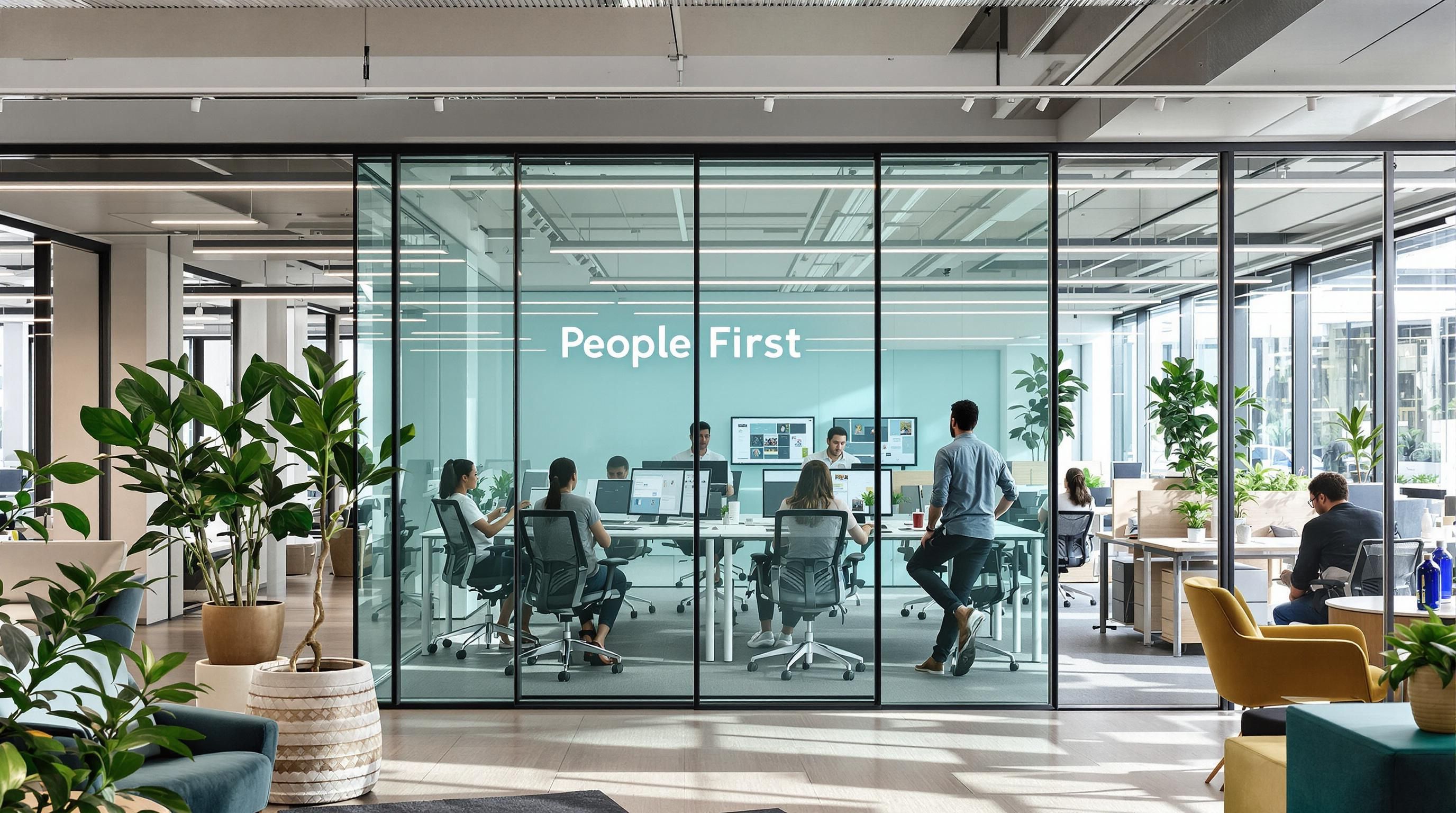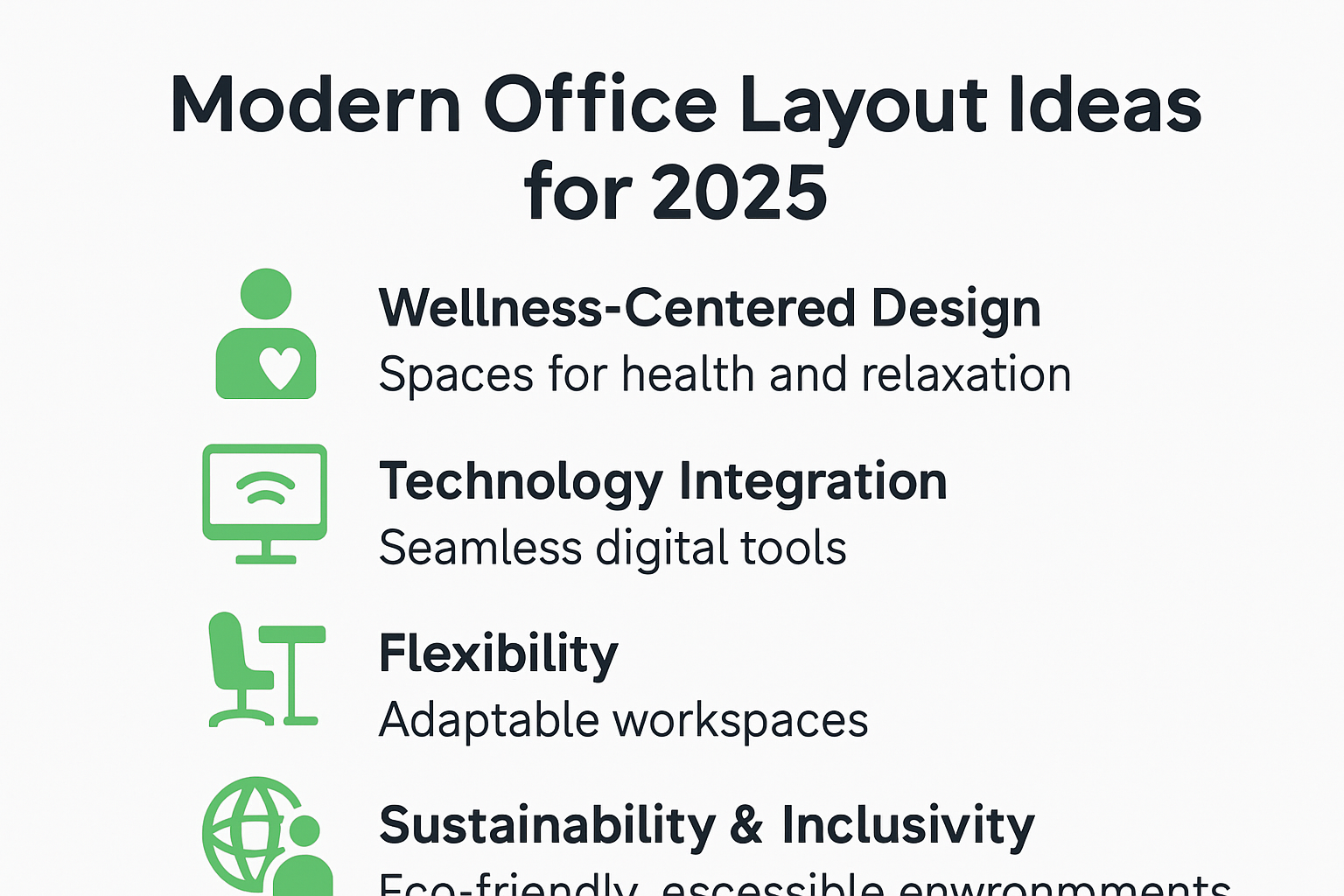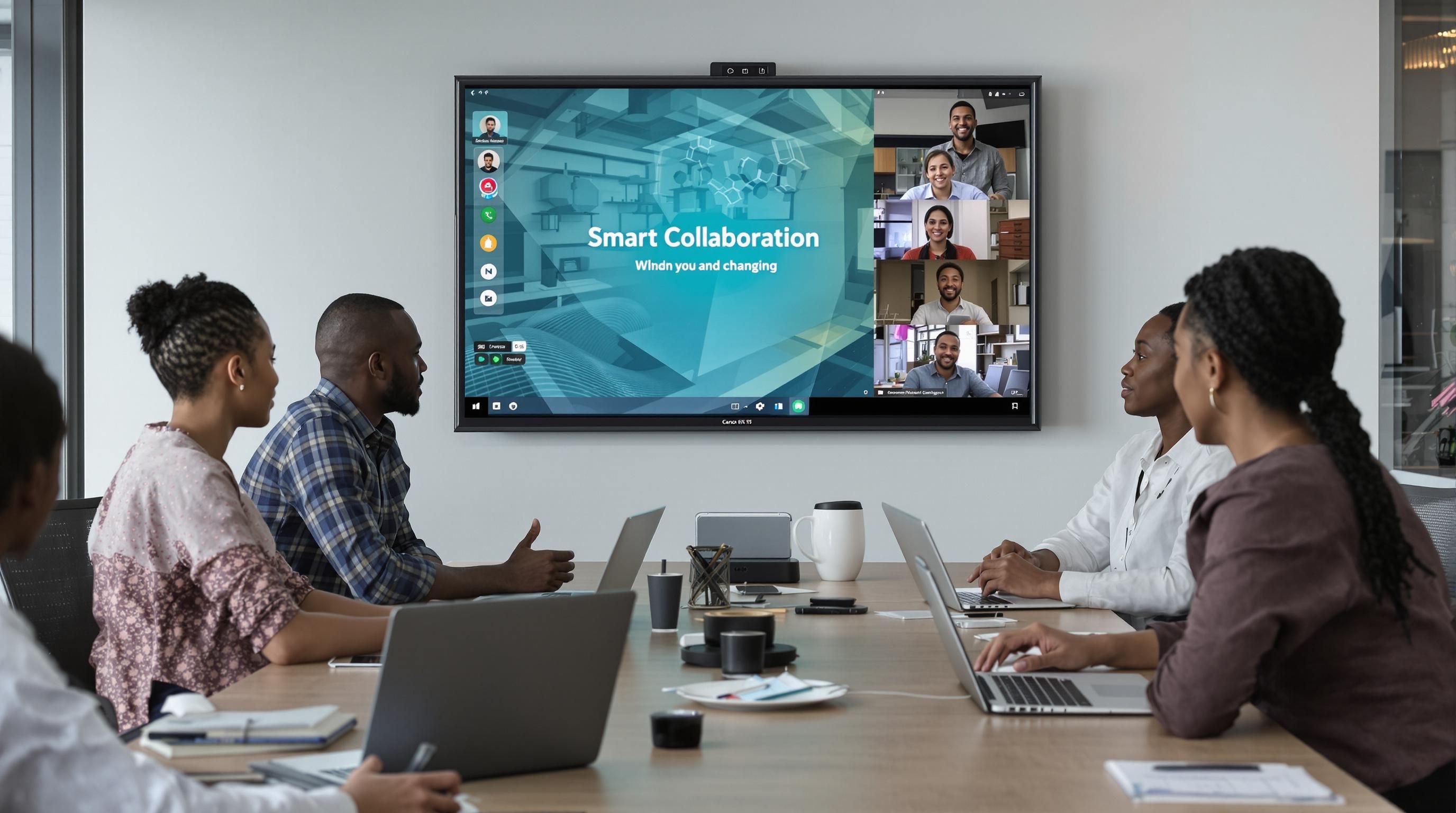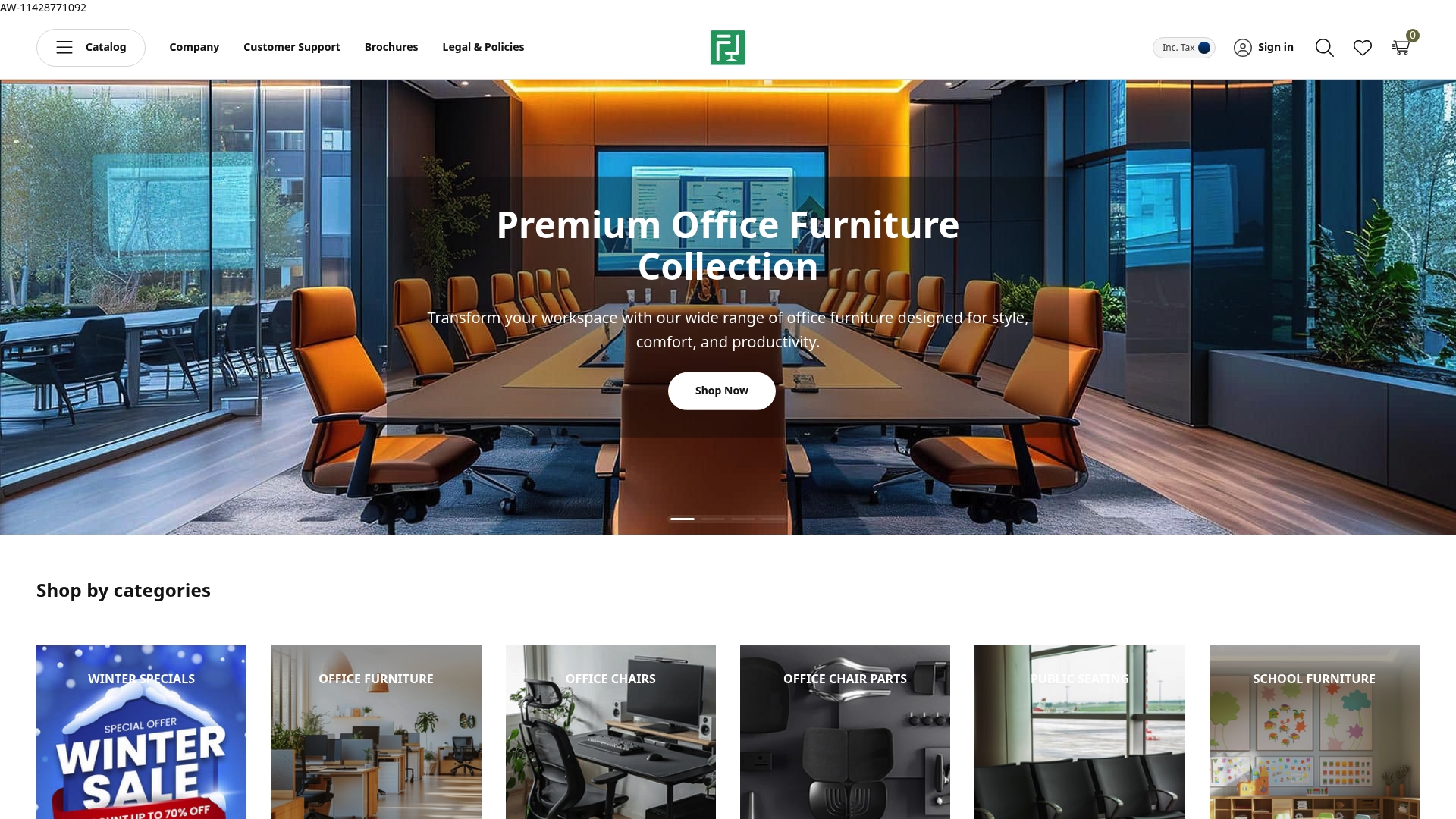Modern Office Layout Ideas for South African Businesses 2025
Jul 27, 2025
Modern Office Layout Ideas for South African Businesses 2025

Office design in South Africa is shifting fast, with everything from hybrid tech to wellbeing front of mind. Nearly 87% of local businesses now say flexible layouts directly increase their productivity and yet, open-plan spaces and beanbags have not solved the daily grind. What really sets 2025 apart is a sharp focus on real human needs, not just fancier furniture, making the next office fit-out about people first and productivity naturally follows.
Table of Contents
- Trends In Modern Office Layouts 2025
- Design Solutions For Different Workplaces
- Maximising Productivity And Collaboration
- Smart Space Planning For African Businesses
Quick Summary
| Takeaway | Explanation |
|---|---|
| Prioritize employee wellness in design | Create adaptable spaces with ergonomic furniture, relaxation zones, and biophilic design to enhance employee health and productivity. |
| Implement technology-integrated workspaces | Utilize smart technology and digital infrastructure to support hybrid work and efficient collaboration across teams. |
| Adopt flexible design solutions | Design adaptable work environments that can transition between individual and collaborative spaces to meet varying needs. |
| Focus on sustainability and inclusivity | Choose eco-friendly materials and create neuro-inclusive spaces that cater to diverse employee requirements and promote accessibility. |
| Maximize productivity through strategic layout | Configure spaces to support various work styles, balancing quiet areas for focus with collaborative zones for teamwork. |

Trends in Modern Office Layouts 2025
The workplace environment is rapidly transforming, driven by technological advancements, changing workforce demographics, and evolving employee expectations. South African businesses are at the forefront of reimagining office layouts that prioritize flexibility, employee well-being, and productivity.
Wellness-Centered Design Approaches
Modern office layout ideas are increasingly focusing on creating holistic work environments that support employee health and mental well-being. Research from Morgan Lovell reveals a significant shift towards designing spaces that actively contribute to employee wellness. This means moving beyond traditional cubicles and static workstations to create dynamic, adaptable spaces that promote physical movement, social interaction, and psychological comfort.
Ergonomic furniture, adjustable workstations, and dedicated relaxation zones are becoming standard features in progressive office designs. Businesses are recognizing that investment in employee well-being directly correlates with improved productivity, reduced stress levels, and lower healthcare costs. Biophilic design elements such as indoor plants, natural lighting, and organic materials are being strategically incorporated to create more calming and restorative work environments.
Technology-Integrated Workspaces
The future of office layouts is intrinsically linked with smart technology integration. Decorilla’s 2025 design trends highlight the importance of creating tech-enabled workspaces that seamlessly support hybrid and remote working models. Advanced collaboration tools, wireless charging stations, IoT-connected meeting rooms, and flexible digital infrastructure are becoming critical components of modern office designs.

Smart office solutions allow businesses to optimize space utilization, monitor environmental conditions, and provide employees with greater control over their immediate work environment. Touchless technologies, advanced video conferencing systems, and AI-powered workspace management tools are transforming how teams interact and collaborate, regardless of physical location.
Sustainable and Inclusive Design Principles
Sustainability and inclusivity are no longer optional but essential considerations in modern office layout ideas. The DLR Group emphasizes the importance of creating neuro-inclusive spaces that accommodate diverse employee needs, including adaptable workstations for different physical abilities, quiet zones for neurodivergent employees, and flexible design elements that promote accessibility.
Environmentally conscious design is also gaining prominence. South African businesses are increasingly selecting recycled materials, implementing energy-efficient lighting and climate control systems, and designing spaces that minimize carbon footprint. These sustainable practices not only reduce operational costs but also demonstrate corporate commitment to environmental responsibility.
As we move into 2025, office layouts will continue to evolve, reflecting a nuanced understanding of workplace dynamics. The most successful designs will balance technological innovation, human-centric approaches, and adaptable spatial configurations that support both individual productivity and collaborative creativity.
To help you understand how the three emerging trends in modern office layouts differ and overlap, the table below summarises their focus areas and common features.
| Trend | Main Focus | Key Features |
|---|---|---|
| Wellness-Centered Design | Employee health, comfort, and wellbeing | Ergonomic furniture, biophilic design, relaxation zones |
| Technology-Integrated | Seamless tech for hybrid/remote work | IoT meeting rooms, wireless charging, smart infrastructure |
| Sustainable & Inclusive | Accessibility, sustainability, diverse needs | Recycled materials, energy efficiency, neuro-inclusivity |
Design Solutions for Different Workplaces
South African businesses are increasingly recognizing that one-size-fits-all office layouts no longer meet the diverse needs of modern workplaces. Different industries and organizational structures require tailored design solutions that support specific work processes, employee requirements, and organizational cultures.
Flexible Workspace Configurations
Research from the Whole Building Design Guide highlights the critical importance of creating adaptable work environments that can seamlessly transition between individual focus areas and collaborative spaces. This approach is particularly crucial for South African businesses seeking to optimize their office layouts.
Modern design solutions now incorporate flexible power and data delivery systems, wireless technology infrastructure, and modular furniture that can be easily reconfigured. These design strategies allow organizations to create dynamic spaces that can quickly adapt to changing team sizes, project requirements, and work styles. Companies are investing in movable partitions, adjustable workstations, and multi-purpose areas that can transform from individual workspaces to collaborative zones within minutes.
Industry-Specific Design Approaches
Different workplace environments demand unique design considerations. A manufacturing facility requires dramatically different layout principles compared to a creative design studio or a financial services firm. According to WorkSafe Victoria’s guidance, understanding the specific workflow and functional requirements of each workplace is essential for creating effective design solutions.
For technical environments like research laboratories or engineering firms, design solutions focus on specialized equipment placement, safety considerations, and workflow optimization. Creative industries might prioritize open, inspiring spaces with flexible collaboration areas and integrated technology. Financial and professional service sectors often require a balance between private meeting spaces and open collaborative zones that support confidential discussions and team interactions.
Personalized Workspace Matching
Advanced design strategies are moving beyond generic layouts towards more personalized workspace solutions. A groundbreaking study titled ‘Spacematch’ explores innovative approaches to matching individuals with workspaces that suit their environmental preferences and work styles.
This emerging approach considers factors such as individual comfort levels, preferred lighting conditions, noise tolerance, and work patterns. By creating a range of workspace options within the same office environment, businesses can accommodate diverse employee needs. Some employees might thrive in quiet, focused areas, while others prefer more dynamic, collaborative spaces. Modern design solutions provide multiple workspace typologies that allow employees to choose environments that optimize their individual productivity.
The future of workplace design in South Africa is about creating intelligent, responsive environments that support employee well-being, organizational efficiency, and adaptability. Successful design solutions will continue to evolve, driven by technological advancements, changing work cultures, and a deeper understanding of human-centric workspace requirements.
Below is a summary table comparing key office layout considerations for different industry sectors, as discussed above.
| Industry Sector | Design Focus | Common Features |
|---|---|---|
| Manufacturing / Technical | Specialisation, safety, workflow | Equipment zones, safety, process efficiency |
| Creative / Design | Inspiration, collaboration, flexibility | Open spaces, breakout areas, tech integration |
| Financial / Professional | Privacy, balance, confidentiality | Meeting rooms, private offices, collab zones |
Maximising Productivity and Collaboration
Productivity and collaboration are fundamental pillars of successful modern workplaces. South African businesses are increasingly investing in strategic office design that goes beyond aesthetic considerations to create environments that actively enhance team performance and individual effectiveness.
Strategic Space Configuration
Research from the Harvard Business Review reveals seven critical attributes that determine effective office design: location, enclosure, exposure, technology, temporality, perspective, and size. These factors play a crucial role in matching physical spaces with specific work activities and organizational objectives.
Successful office layouts strategically balance different work zones to support various tasks. This includes creating dedicated areas for focused individual work, informal collaboration spaces, quiet zones for concentration, and dynamic meeting areas that facilitate team interactions. By providing employees with diverse workspace options, businesses can accommodate different work styles and preferences, ultimately driving higher productivity and engagement.
Acoustic Design and Noise Management
A comprehensive study published in MDPI’s Buildings journal highlights the significant impact of acoustic environment on workplace productivity. Distractions and excessive noise can dramatically reduce perceived productivity and employee satisfaction. Modern office design must therefore prioritize sound management through strategic spatial planning, acoustic materials, and intelligent zoning.
Innovative solutions include sound-absorbing panels, strategic placement of collaborative and quiet zones, and the use of white noise systems to create a balanced auditory environment. Some organizations are implementing advanced acoustic technologies that allow employees to control their immediate sound environment, enabling them to adjust noise levels according to their work requirements.
Technology-Enabled Collaboration Spaces
Collaboration in the modern workplace extends beyond physical proximity. Advanced office layouts integrate cutting-edge technology to facilitate seamless communication and teamwork, regardless of physical location. This includes designing spaces with integrated video conferencing capabilities, wireless sharing technologies, and flexible digital infrastructure that supports both in-person and remote collaboration.
Multi-functional meeting rooms equipped with interactive digital displays, movable furniture, and advanced audiovisual systems enable teams to collaborate more effectively. These spaces are designed to be adaptable, allowing quick reconfiguration for different meeting types, from formal presentations to spontaneous brainstorming sessions.
The future of workplace productivity lies in creating holistic environments that recognize the complex, dynamic nature of modern work. By thoughtfully designing spaces that support individual focus, team collaboration, and technological integration, South African businesses can create workplaces that not only meet current challenges but anticipate future workplace evolution.
Smart Space Planning for African Businesses
Smart space planning represents a transformative approach for African businesses seeking to optimize their workplace environments. By integrating advanced technologies, sustainable practices, and innovative design strategies, organizations can create more efficient, adaptable, and productive workspaces that address the unique challenges of the African business landscape.
Technological Integration and Local Context
Research exploring green building practices in developing countries reveals critical insights into smart space planning tailored for African businesses. The study emphasizes the importance of developing solutions that are not only technologically advanced but also culturally and economically appropriate.
Smart space planning in African contexts requires a nuanced approach that considers local infrastructure limitations, resource constraints, and specific organizational needs. This means designing flexible spaces that can adapt to changing technological capabilities and business requirements. Businesses are increasingly implementing modular design concepts that allow for easy reconfiguration, minimal infrastructure investment, and maximum long-term utility.
Intelligent Business Operation Technologies
The innovative ‘Dukawalla’ research demonstrates how intelligent technologies can revolutionize workspace management. Voice-activated interfaces and generative AI systems are emerging as powerful tools for small and medium-sized enterprises to optimize their operational spaces. These technologies enable businesses to gather real-time data about space utilization, employee productivity, and environmental conditions.
Intelligent space planning now involves implementing sensors and IoT devices that can track occupancy rates, monitor energy consumption, and provide insights into workspace efficiency. Such technologies allow businesses to make data-driven decisions about office layout, resource allocation, and workspace design. For instance, heat mapping technologies can reveal how different areas of an office are used, helping managers redesign spaces to improve workflow and collaboration.
Sustainable and Adaptive Design Strategies
The African Smart Cities Strategies research provides valuable perspectives on integrating smart technologies within broader urban development frameworks. For African businesses, this means adopting design strategies that are not just technologically sophisticated but also environmentally sustainable and economically viable.
Sustainable smart space planning involves selecting locally sourced materials, implementing energy-efficient systems, and creating workspaces that can easily adapt to future technological and organizational changes. This might include designing buildings with natural ventilation, using solar power technologies, and creating multi-functional spaces that can serve different purposes without significant structural modifications.
The future of smart space planning for African businesses lies in creating intelligent, responsive environments that balance technological innovation with practical, locally relevant solutions. By embracing flexible design principles, leveraging intelligent technologies, and prioritizing sustainability, businesses can develop workspaces that not only meet current operational needs but also anticipate future challenges and opportunities.
Frequently Asked Questions
What are the key trends in modern office layouts for South African businesses in 2025?
Key trends include wellness-centered design approaches that focus on employee health, technology-integrated workspaces supporting hybrid work, and sustainable and inclusive design principles that cater to diverse employee needs.
How can businesses prioritize employee well-being in their office design?
Businesses can prioritize well-being by incorporating ergonomic furniture, creating relaxation zones, and using biophilic design elements like natural light and indoor plants to enhance the work environment.
What are flexible workspace configurations, and why are they important?
Flexible workspace configurations allow for adaptable office designs that can transition between individual and collaborative spaces, helping organizations accommodate varying team sizes and project demands quickly and effectively.
Why is technology integration crucial for modern office layouts?
Technology integration is crucial as it facilitates seamless communication and collaboration, especially for hybrid work models. Smart technologies can enhance space utilization and provide employees with control over their environments.
Transform Your South African Office in 2025 with Office Stock
Is your team struggling to stay comfortable and productive in an outdated workspace? If you are seeking solutions to boost well-being, adapt to hybrid technologies, or create flexible areas tailored to different work styles, you are not alone. The article highlights how employee wellness, adaptable configurations, and meaningful technology integration are changing workspaces across South Africa. The truth is that even the smartest office layouts fall short if you lack the right furniture to bring these ideas to life.

Take the next step toward a more inspiring and efficient office environment today. Explore Office Stock for a full range of ergonomic chairs, modern office desks, and functional storage solutions that help you put the latest layout ideas into action. Our expert team understands the South African market and is ready to help you create a workspace your team will love. Shop now to secure high-quality solutions that deliver all the benefits discussed in this article.
Recommended
- Hexagonal Boardroom Table | Buy Office Furniture Online - Office Stock
- Leather In Room Directory Folder | Buy Uncategorized Online - Office Stock
- Sign Frame (1000*2100mm - Double Sided - Standing) | Buy Double Sided - Standing Online - Office Stock
- Frameless Glass Board White | Buy Office Accessories Online - Office Stock
